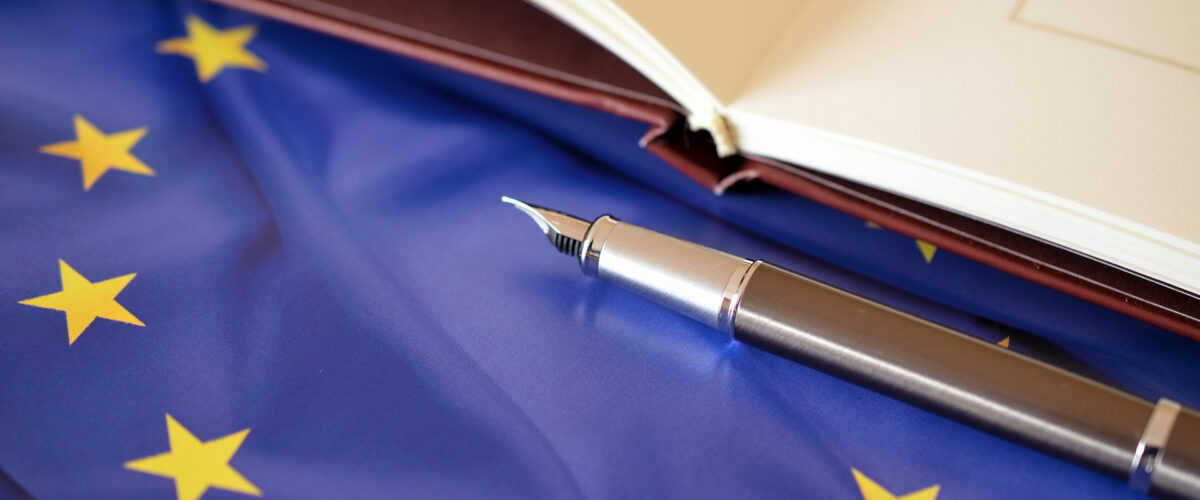artikel | 08 dec 2023
EU Regulation for Non-Agri Geographical Indications Now in Force

On 16 November 2023, the new EU Regulation 2023/2411 on the protection of geographical indications for craft and industrial products entered into force. The new regulation introduces EU-wide geographical indications (“GI”) to protect a wide range of craft and industrial products, including natural stones, woodwork, jewellery, textiles, lace, cutlery, glass, porcelain and skins. These products are also termed non-agri GIs, as the regulation does not include agricultural products. Swedish examples could include a requirement that a Dala horse must be produced in Dalarna or that Falu Röd Färg (Falun red paint) must truly come from Falun. It will be possible to apply for registration of non-agri GIs from 1 December 2025. The system will be overseen by the European Union Intellectual Property Office (EUIPO), the EU trademark office.
Background
Until now, only wine, spirit drinks and agricultural products enjoyed EU-wide GI protection, while crafts and industrial products relied on national-level protection. Expanding GI protection to non-agri GIs at EU level aims to increase consumer awareness of product authenticity and positively impact micro and small to medium-sized enterprises by enhancing their competitiveness.
Craft and industrial products
Craft and industrial products are those that are produced either entirely by hand, with manual or digital tools, or by mechanical means where there is a significant manual contribution. Additionally, products produced in a standardised way, including serial production and the use of machines, fall under this category. Generally, a GI application must be submitted by a producer group, which is an association of producers working on the same product. A single producer is allowed to apply if they are the only producer willing to apply in a specific geographical area, or if their product differs significantly from those in neighbouring areas.
Protection Framework
Crafts and industrial products will be protected under a system equivalent to protected geographical indications (PGI) for alcoholic beverages and agricultural products. This means that the protection is anchored in the product’s quality and reputation rather than its ties to specific geographical factors like soil, climate etc. (often referred to as terroir). Crafts and industrial products will also be distinguished by the use of the same PGI logo as alcoholic beverages and agricultural products. To strengthen the protection and to combat counterfeiting effectively, the protection also applies to domain names, goods in transit and online sales.
Once a product attains non-agri GI status, its use may be controlled in a number of ways. This includes prohibiting the commercial use of the GI for products not encompassed by the registration, preventing any misuse or imitation of the protected name as a GI, and disallowing any false or misleading claims regarding the product’s source, origin, characteristics or essential qualities in packaging and advertising.
Requirements for protection
For a product’s name to qualify as a GI, it must meet three requirements:
- the product is rooted in or originates in a specific location, region or country;
- a given quality, the reputation or other characteristic of the product is essentially attributable to its geographical origin; and
- at least one of the production steps takes place in that geographical area.
The applicant must demonstrate compliance through a ‘product specification’ which must include inter alia the name to be protected as a GI, a product description, geographical area specifics, evidence linking the area to the product’s quality, reputation, or characteristics, and an indication of any production step that is performed outside the country that the name of the product originates from.
A ‘production step’ encompasses any stage from manufacturing to packaging, up to the point where the product can be placed on the market. One or several of these steps should impart a unique reputation or characteristic to the product. Products primarily made outside the given area or merely transported there for packaging or non-essential production steps are not eligible for protection.
Two-phase registration process
The registration process for a new GI protection is divided into two distinct phases, the first at national level, followed by examination of the application by the EUIPO at EU level. In the first phase, a national authority, such as a national intellectual property office, processes the GI application at the national level. EU Member States can request to be exempt from the obligation to set up a national registration procedure. In such cases, the application can be directly submitted to the EU phase. Producers from non-EU countries can also pursue protection under these new rules for those of their renowned craft and industrial products that comply with EU requirements.
The relationship to trademarks
While trademarks and GIs differ in nature and purpose, situations may arise where the rules conflict or overlap with each other, specifically in relation to criteria for the rejection of trademark applications, the invalidation of trademarks and the coexistence of trademarks and GIs.
The starting point is that conflicts between GIs and trademarks should be resolved based on the principle of “first in time, first in right”. For example, if a trademark application conflicts with a GI, it can be declined if submitted after the date of the GI registration application. The GI regulation also encompasses nuanced and more detailed rules pertaining to conflicts between trademarks and GIs that necessitate individual assessments on a case-by-case basis.
Conclusions
In summary, the new rules provide for stronger and harmonised protection of geographical indications for craft and industrial products throughout the EU. Existing national geographical indications for craft and industrial products will cease to exist one year after the date of application of the Regulation, i.e. in December 2026. It is expected that 300 to 800 names currently protected nationally will be notified for EU protection. Operators whose interests are affected by the registration of a GI may be granted a specific derogation to continue to use the registered name for a limited period of time. Setterwalls will monitor developments in the new regulation and will be happy to assist in related matters.
Kontakt:
Verksamhetsområde:


